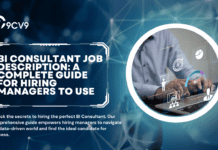Key Takeaways
- Contact center software centralizes customer communication across voice, email, chat, and social media for seamless support.
- It enhances customer experience through features like intelligent call routing, CRM integration, and real-time analytics.
- Modern solutions leverage cloud technology and AI to improve efficiency, scalability, and customer satisfaction.
In today’s fast-paced, digitally driven business landscape, customer service has evolved from being a simple support function to a critical component of brand reputation, customer retention, and long-term success. Organizations of all sizes, across diverse industries, are under increasing pressure to deliver seamless, efficient, and personalized customer experiences across multiple communication channels. From phone calls and emails to live chats, social media messages, and SMS, modern consumers expect quick, consistent, and helpful responses—regardless of the platform they use. Meeting these high expectations requires much more than a basic call management system. This is where contact center software emerges as a transformative solution.

Contact center software is a comprehensive technology platform designed to manage and streamline customer interactions across various channels, all from a centralized system. Unlike traditional call centers that rely primarily on voice calls, modern contact centers utilize omnichannel capabilities to integrate voice, email, chat, social media, and more into a unified interface. This allows customer service teams to provide timely and efficient support, improve communication consistency, and enhance the overall customer experience. As digital transformation continues to shape the way companies interact with their audiences, contact center software has become an indispensable tool for businesses aiming to scale operations while maintaining high service quality.
The adoption of contact center software is not limited to large enterprises. Small and mid-sized businesses are increasingly recognizing its value in driving operational efficiency, improving agent productivity, and gaining real-time insights through advanced analytics and reporting tools. From automated call distribution (ACD) and interactive voice response (IVR) systems to AI-driven chatbots and CRM integrations, these platforms are packed with features designed to optimize the end-to-end customer service lifecycle.
In addition to managing external communication, contact center software plays a vital role in internal workflows by helping supervisors monitor agent performance, ensure quality assurance, and manage workforce schedules. With the rise of cloud-based solutions, companies now have the flexibility to deploy contact center systems without heavy upfront investments in infrastructure. This shift toward cloud-native platforms also enables remote work environments, making it easier for businesses to support distributed teams and global customer bases.
Understanding how contact center software works is essential for businesses looking to enhance customer engagement, reduce response times, and streamline operations. By automating routine tasks, centralizing customer data, and providing actionable insights, this software empowers organizations to deliver superior customer service experiences that foster trust, loyalty, and brand advocacy.
This comprehensive blog will explore what contact center software is, delve into its key features, explain how it functions behind the scenes, and highlight its practical benefits for businesses in the digital age. Whether you’re a business leader considering a contact center solution or an IT professional exploring scalable support technologies, this guide will provide valuable insights to help you make informed decisions.
Before we venture further into this article, we would like to share who we are and what we do.
About 9cv9
9cv9 is a business tech startup based in Singapore and Asia, with a strong presence all over the world.
With over nine years of startup and business experience, and being highly involved in connecting with thousands of companies and startups, the 9cv9 team has listed some important learning points in this overview of What is Contact Center Software & How It Works.
If your company needs recruitment and headhunting services to hire top-quality employees, you can use 9cv9 headhunting and recruitment services to hire top talents and candidates. Find out more here, or send over an email to [email protected].
Or just post 1 free job posting here at 9cv9 Hiring Portal in under 10 minutes.
What is Contact Center Software & How It Works
- What is Contact Center Software?
- Core Features of Contact Center Software
- How Contact Center Software Works
- Types of Contact Center Software
- Benefits of Using Contact Center Software
- Challenges in Implementing Contact Center Software
- Future Trends in Contact Center Software
1. What is Contact Center Software?
Contact center software is an advanced technology solution that centralizes and automates customer interactions across multiple communication channels. Unlike traditional call center systems that primarily manage inbound and outbound phone calls, contact center software offers omnichannel support, enabling businesses to engage customers through voice, email, live chat, SMS, social media, and even video conferencing—all from a single, unified platform.
Core Definition and Objective
Purpose of Contact Center Software
- To streamline and centralize customer service operations
- To improve response time and communication accuracy
- To enhance the customer experience by offering consistent service across all touchpoints
- To support data-driven decision-making through performance analytics
General Capabilities
- Handling high volumes of customer queries in real-time
- Routing inquiries to the most appropriate agents or departments
- Providing agents with contextual data through CRM integration
- Automating routine tasks using AI and machine learning
How It Differs from Traditional Call Center Systems
| Feature | Traditional Call Center | Modern Contact Center Software |
|---|---|---|
| Primary Channel | Voice (Phone) | Omnichannel (Voice, Chat, Email, etc.) |
| Data Management | Manual or limited | Real-time CRM integration |
| Scalability | Hardware-dependent | Cloud-based, highly scalable |
| Remote Support | Often on-premise only | Supports remote and hybrid teams |
| Customer Personalization | Minimal | AI-driven and context-aware |
Key Functions of Contact Center Software
Multichannel Communication Management
- Centralized dashboard for handling:
- Phone calls
- Live chat sessions
- Social media inquiries (e.g., Twitter, Facebook)
- SMS and WhatsApp messages
- Email ticketing systems
- Enables agents to switch between channels without losing context
Customer Relationship Management (CRM) Integration
- Connects with platforms like Salesforce, HubSpot, Zoho, etc.
- Allows agents to view customer history, preferences, and previous interactions
- Speeds up resolution times and improves personalization
Automated Routing and Workflow Management
- Uses ACD (Automatic Call Distribution) to route calls to the most suitable agent
- IVR (Interactive Voice Response) systems allow customers to self-navigate options
- AI-based intelligent routing enhances service efficiency
Example:
A banking contact center uses IVR to direct users to self-service options such as checking account balances, while complex queries are routed to financial specialists.
Primary Components of Contact Center Software
| Component | Description |
|---|---|
| ACD (Automatic Call Distribution) | Distributes calls based on predefined logic (skills, language, load) |
| IVR (Interactive Voice Response) | Enables customers to interact with menus via voice or keypad input |
| WFM (Workforce Management) | Forecasts workload, schedules agents, and tracks performance |
| Call Recording & Monitoring | Records calls for training, compliance, and quality assurance |
| Real-Time Analytics | Dashboards and reporting tools to track KPIs and agent productivity |
| Omnichannel Support Engine | Manages all customer touchpoints in a unified interface |
Real-World Examples of Contact Center Software
1. Zendesk Talk
- Integrates voice with Zendesk’s ticketing system
- Supports omnichannel capabilities via email, chat, and social media
- Example: E-commerce companies use Zendesk Talk to manage customer complaints, returns, and order tracking seamlessly
2. Genesys Cloud CX
- AI-powered cloud platform
- Offers predictive engagement, journey analytics, and voice bots
- Used by telecom and healthcare providers to handle high-volume traffic with personalized responses
3. Freshdesk Contact Center (formerly Freshcaller)
- Cloud-based contact center with call masking, IVR, and voicemail drop
- Example: Startups and small businesses use Freshdesk to reduce operational costs while maintaining professional-grade service
Benefits of Contact Center Software
Customer Experience Enhancement
- Reduces wait times and provides consistent responses
- Offers self-service options for quicker resolution
Operational Efficiency
- Reduces the need for manual tasks
- Enhances agent collaboration with shared notes and CRM data
Cost Savings
- Cloud-based models eliminate the need for expensive on-premise infrastructure
- Pay-as-you-go pricing models allow cost flexibility
Scalability and Flexibility
- Suitable for businesses of all sizes
- Enables rapid scaling during seasonal demand spikes or business expansion
Use Case Comparison Table
| Industry | Use Case Example | Software Used | Benefit Realized |
|---|---|---|---|
| Retail | Order tracking & product inquiries | Zendesk, Freshdesk | Reduced ticket resolution time by 35% |
| Healthcare | Appointment scheduling & telemedicine support | Genesys, NICE inContact | Improved patient satisfaction scores |
| Finance | Fraud detection alerts & account queries | Talkdesk, Five9 | Enhanced security and faster resolution |
| Travel & Tourism | Booking support and itinerary updates | Aircall, LiveAgent | Increased booking conversion rates |
Conclusion of Section
In summary, contact center software serves as a vital technology for modern businesses seeking to offer outstanding customer service across various digital and traditional channels. It empowers organizations with tools for efficient communication, automation, and insightful analytics, allowing them to better understand and respond to customer needs. Whether it’s a startup managing online orders or a global enterprise supporting millions of users, contact center software lays the foundation for scalable, efficient, and high-quality customer engagement.
2. Core Features of Contact Center Software
Contact center software is designed to enhance operational efficiency, customer satisfaction, and overall communication management across multiple channels. Its effectiveness lies in its robust suite of features that automate, streamline, and personalize the customer service experience.
Below is a detailed breakdown of the core features of contact center software, supported by practical examples and visual aids.
Omnichannel Communication Integration
Overview
- Unifies customer interactions across:
- Phone (inbound/outbound)
- Live chat
- Email support
- SMS and messaging apps
- Social media platforms (e.g., Facebook, X, Instagram)
- Provides a seamless experience regardless of the channel
Benefits
- Eliminates the need to toggle between multiple tools
- Maintains conversation history for continuity
- Enhances agent efficiency and customer satisfaction
Example
- A retail brand uses Freshdesk Omnichannel Suite to manage customer support queries from WhatsApp, Instagram DMs, email, and phone calls on a single interface.
Automatic Call Distribution (ACD)
Overview
- Automatically routes incoming calls to the most appropriate agent or department
- Routing logic can be based on:
- Agent skills or expertise
- Call volume/load balancing
- Customer language preference or location
Benefits
- Reduces wait times and call transfers
- Improves first-call resolution (FCR) rate
- Enhances workforce productivity
Example
- Five9’s ACD system uses skill-based routing to ensure VIP customers are directed to senior support agents, reducing escalation rates.
Interactive Voice Response (IVR) System
Overview
- Allows customers to interact with a voice menu using keypad inputs or voice commands
- Enables self-service for basic inquiries (e.g., checking order status, paying bills)
Features
- Custom menu configuration
- Multilingual support
- Integration with backend systems (CRM, billing, etc.)
Benefits
- Deflects repetitive queries from human agents
- Shortens customer handling time
- Available 24/7 without requiring live staff
Example
- A telecom provider uses Genesys IVR to enable customers to troubleshoot connectivity issues before reaching a support agent.
Computer Telephony Integration (CTI)
Overview
- Connects telephone systems with computer systems
- Allows agents to manage calls directly from their desktops
Key Capabilities
- Click-to-call functionality
- Screen pops with customer details during calls
- Call control (answer, hold, transfer) from desktop interface
Benefits
- Increases agent productivity
- Reduces call handling time
- Enhances personalized service delivery
Customer Relationship Management (CRM) Integration
Overview
- Seamlessly connects contact center software with CRM tools like Salesforce, HubSpot, or Zoho
Functionality
- Retrieves and displays real-time customer data (purchase history, preferences, interactions)
- Enables agents to update records and notes during live interactions
Benefits
- Delivers contextual and personalized support
- Facilitates faster resolution
- Aligns marketing, sales, and support efforts
Example
- Zendesk + Salesforce integration allows agents to view full customer profiles while managing email and voice interactions in real time.
Workforce Management (WFM)
Overview
- Tools for forecasting, scheduling, and managing agent shifts
Key Features
- Real-time adherence monitoring
- Historical data analysis for accurate forecasting
- Shift swapping and time-off management
Benefits
- Ensures optimal staffing levels
- Minimizes overstaffing or understaffing
- Improves service-level agreements (SLAs)
Example
- NICE WFM Suite enables a bank’s contact center to predict staffing needs based on customer volume trends, leading to a 20% reduction in overtime costs.
Call Recording and Monitoring
Overview
- Automatically records all inbound and outbound interactions
- Includes tools for call review, quality scoring, and coaching
Benefits
- Helps ensure compliance with regulatory requirements
- Facilitates continuous improvement through performance feedback
- Aids in dispute resolution and training
Example
- Talkdesk provides full access to call recordings and transcripts, used by quality managers for performance reviews.
Real-Time Analytics and Reporting
Overview
- Dashboards and reporting tools to track performance metrics such as:
- Average handling time (AHT)
- First contact resolution (FCR)
- Customer satisfaction (CSAT)
- Agent utilization
Benefits
- Enables data-driven decision-making
- Identifies performance gaps and trends
- Supports KPI tracking and SLA adherence
Example
- LiveAgent’s analytics dashboard gives supervisors a live view of agent activity and queue status to adjust staffing in real time.
AI and Automation Features
Key Components
- AI Chatbots: Automate FAQ responses or lead qualification
- Predictive Dialers: Optimize outbound call campaigns
- Sentiment Analysis: Detect customer mood or dissatisfaction
- Voice Analytics: Transcribe and analyze calls for quality trends
Benefits
- Reduces operational workload
- Offers proactive support
- Enhances decision-making with AI-driven insights
Example
- Amazon Connect uses Lex (an AI chatbot service) to provide automated responses and escalate complex issues only when necessary.
Security and Compliance Tools
Key Features
- End-to-end encryption of communications
- Role-based access control (RBAC)
- Compliance support for GDPR, HIPAA, PCI DSS
Benefits
- Protects sensitive customer data
- Prevents unauthorized access
- Ensures legal and industry compliance
Feature Comparison Table
| Feature | Description | Example Tools | Key Benefit |
|---|---|---|---|
| Omnichannel Integration | Unified support across channels | Freshdesk, Zendesk | Seamless experience across platforms |
| ACD | Intelligent call routing | Five9, Genesys | Faster resolution and fewer transfers |
| IVR | Interactive voice menus | Avaya, RingCentral | 24/7 support and task automation |
| CRM Integration | Sync with customer databases | Salesforce, Zoho | Personalized and informed support |
| AI & Automation | Chatbots, sentiment analysis, voice AI | Amazon Connect, Dialpad | Higher efficiency and predictive support |
| WFM | Staff scheduling and workload forecasting | NICE, Calabrio | Reduced labor costs and better planning |
| Call Recording & Monitoring | Compliance and performance reviews | Talkdesk, Aircall | Agent training and legal assurance |
| Analytics & Reporting | Real-time performance tracking | LiveAgent, Twilio Flex | KPI management and SLA optimization |
Conclusion of Section
The robust feature set of modern contact center software enables organizations to deliver efficient, consistent, and scalable customer service. From omnichannel communication and AI automation to workforce management and compliance tools, these features are designed to enhance every aspect of the customer support journey. As businesses continue to prioritize customer experience, leveraging the right features in a contact center platform can provide a significant competitive advantage in today’s service-driven economy.
3. How Contact Center Software Works
Understanding how contact center software functions is critical for businesses aiming to deliver seamless, scalable, and data-driven customer support. This software acts as a centralized hub that unifies communication, automates workflows, integrates with business tools, and offers actionable insights to optimize service delivery.
Below is a comprehensive explanation of how contact center software operates across its key functional layers.
1. System Architecture and Deployment Models
Cloud-Based Contact Centers
- Hosted on third-party cloud platforms such as AWS, Azure, or Google Cloud
- Accessed through web browsers without requiring heavy IT infrastructure
Benefits
- High scalability and flexibility
- Lower upfront cost and quick deployment
- Regular updates and high availability (uptime guarantees)
Example
- Amazon Connect enables cloud-based customer support setup with pay-as-you-go pricing and scalable infrastructure.
On-Premise Contact Centers
- Software and hardware are installed and managed on-site by the organization
- Requires dedicated IT staff for maintenance and upgrades
Benefits
- Greater control over data and configurations
- May offer better performance for industries with strict compliance requirements
Example
- A government agency may use an on-premise Avaya Contact Center to comply with strict data residency laws.
Hybrid Contact Centers
- Combines on-premise infrastructure with cloud functionalities
- Offers gradual migration to cloud-based features
2. Call and Communication Routing Workflow
Contact center software automates the flow of inbound and outbound interactions using intelligent routing systems:
Inbound Workflow
- A customer contacts the center via phone, email, chat, or social media
- System identifies the nature of the request via:
- Interactive Voice Response (IVR)
- Natural Language Processing (NLP) bots
- Automatic Call Distribution (ACD) routes the request to:
- The most appropriate agent (based on skills, language, workload)
- A self-service option (if suitable)
Outbound Workflow
- Predictive dialers or agent-assisted tools initiate outbound calls
- Agents follow scripts or workflows triggered by CRM records
- System logs call data and synchronizes it with customer profiles
3. Real-Time Agent and Customer Interaction Management
Agent Desktop Interface
- Unified dashboard where agents manage interactions across all channels
- Key functionalities include:
- Accepting or placing calls/chats
- Viewing customer data via CRM integration
- Accessing knowledge base articles
- Escalating tickets or assigning follow-ups
Customer Journey Tracking
- Tracks interaction history in real time
- Allows for personalized service based on:
- Previous issues
- Purchase behavior
- Channel preferences
Example
- Zendesk Agent Workspace presents a full interaction timeline, enabling the agent to continue a previously unresolved issue seamlessly.
4. Automation and Artificial Intelligence (AI)
Chatbots and Voicebots
- Provide immediate responses to common queries
- Collect preliminary information before routing to a live agent
- Built using AI frameworks such as Dialogflow, Lex, or proprietary tools
Intelligent Routing and Predictive Analytics
- Predicts customer intent using machine learning
- Adjusts routing decisions dynamically to reduce queue times
Speech and Sentiment Analysis
- AI listens to call recordings and live calls
- Detects stress, urgency, or dissatisfaction in customer tone
- Flags interactions for supervisor intervention or review
Example
- Five9 uses AI-based speech analytics to detect customer frustration in real time and escalate calls when needed.
5. Integration with Business Applications
Contact center software connects with a variety of business tools for enhanced functionality.
CRM Integration
- Links with platforms like Salesforce, HubSpot, Microsoft Dynamics
- Automatically pulls customer records and updates interaction logs
Help Desk and Ticketing Tools
- Integrates with tools like Jira Service Desk or ServiceNow
- Automates ticket creation, tagging, and resolution tracking
Marketing and Sales Platforms
- Helps align support with customer lifecycle management
- Useful for upselling/cross-selling based on historical data
Example
- HubSpot + Aircall integration allows support agents to view customer details while initiating a call from within the CRM.
6. Monitoring, Reporting, and Analytics
Real-Time Monitoring Tools
- Supervisors view agent status, live queues, call wait times, etc.
- Allows immediate decision-making to reduce bottlenecks
Historical Analytics
- Generates detailed reports on:
- Call volume trends
- Agent performance metrics
- Customer satisfaction scores
- SLA adherence
Custom Dashboards
- Visualize data using graphs, heatmaps, and KPIs
- Can be filtered by team, channel, date, or campaign
Example
- Talkdesk Live Dashboard shows live key performance indicators (KPIs) like Average Handle Time (AHT) and First Contact Resolution (FCR) by shift.
7. Workforce and Quality Management
Workforce Scheduling
- Predicts customer demand to allocate the right number of agents
- Adjusts for absenteeism, holidays, or peak hours
Performance Feedback and Coaching
- Uses call recordings and QA scorecards to assess agent performance
- Provides coaching modules for improvement
Quality Assurance Automation
- Automates review of interactions based on compliance scripts or sentiment markers
- Flags problematic calls for manual review
Example
- NICE CXone includes built-in WFM and QA modules to streamline scheduling and coaching in one platform.
8. Security and Compliance Mechanisms
Authentication and Access Control
- Role-based permissions
- Multi-factor authentication (MFA) for login
Data Encryption
- End-to-end encryption of call data, transcripts, and stored records
Compliance Monitoring
- Ensures adherence to industry-specific regulations:
- PCI DSS for payment processing
- HIPAA for healthcare
- GDPR for data privacy in the EU
Example
- Genesys Cloud CX offers HIPAA-compliant cloud hosting and encryption protocols for healthcare contact centers.
Visual Overview: How Contact Center Software Works
Workflow Diagram
Customer Initiates Contact
↓
Channel Entry Point (Phone, Chat, Email, Social)
↓
IVR/AI Bot Engages → Self-Service Option or Escalate
↓
ACD Routes to Right Agent or Queue
↓
Agent Dashboard Accesses CRM Data & Tools
↓
Issue Resolution Logged & Synced with CRM/Ticketing
↓
Analytics Captures Metrics → Reports Generated
↓
WFM & QA Teams Use Data for Planning and Coaching
Feature-to-Function Table
| Functionality | Feature Used | Technology or Example |
|---|---|---|
| Customer Self-Service | IVR / Chatbot | Genesys VoiceBot |
| Intelligent Call Handling | ACD + Routing Rules | Five9 ACD |
| Personalized Support | CRM Integration | Salesforce + Talkdesk |
| Real-Time Interaction Management | Agent Interface + Live Monitoring | Zendesk, LiveAgent |
| Workforce Planning | WFM Tools | NICE WFM |
| Data Security & Compliance | Encryption + RBAC | Avaya, Cisco, Genesys |
| Decision-Making | Analytics Dashboards | Talkdesk, Twilio Flex |
Conclusion of Section
Contact center software operates as a dynamic and intelligent engine that powers the entire customer engagement lifecycle. From routing calls and managing real-time interactions to integrating with CRM systems and leveraging AI for predictive insights, the software’s functionality is both comprehensive and customizable. Businesses that effectively implement and utilize these features can dramatically enhance their customer satisfaction scores, operational efficiency, and return on investment. With cloud-native technologies, AI automation, and real-time analytics, modern contact centers have evolved into strategic tools for customer-centric growth.
4. Types of Contact Center Software
The contact center ecosystem has evolved to encompass a range of software types, each designed to serve specific operational needs, deployment preferences, and business goals. Choosing the right type of contact center software depends on factors such as company size, customer engagement strategies, channel usage, regulatory requirements, and scalability needs.
This section explores the main types of contact center software, complete with examples and comparisons.
1. Based on Deployment Models
Cloud-Based Contact Center Software
- Delivered via the internet with infrastructure hosted on third-party servers.
- Suitable for businesses seeking flexibility, scalability, and reduced IT overhead.
Key Characteristics
- Quick to deploy and easy to scale
- Monthly or usage-based subscription pricing
- Accessible from any location with internet connectivity
Popular Examples
- Amazon Connect – a scalable, pay-as-you-go solution by AWS
- Talkdesk – known for AI-powered automation and fast deployment
- Genesys Cloud CX – offers omnichannel capabilities and native AI features
On-Premise Contact Center Software
- Installed locally on company-owned servers and maintained by internal IT teams.
- Preferred by organizations with stringent compliance or customization needs.
Key Characteristics
- Full control over data and security configurations
- Higher upfront investment in hardware and software licenses
- Ideal for regulated industries (e.g., finance, healthcare, government)
Popular Examples
- Avaya Aura Contact Center
- Cisco Unified Contact Center Enterprise (UCCE)
Hybrid Contact Center Software
- Combines elements of both on-premise and cloud-based systems.
- Enables gradual transition to the cloud or maintains critical infrastructure locally.
Key Characteristics
- Flexibility to retain legacy systems while adopting modern tools
- Balanced control and scalability
- Suitable for organizations undergoing digital transformation
Popular Examples
- Mitel MiContact Center Business
- Genesys Engage Hybrid Model
2. Based on Communication Channels Supported
Multichannel Contact Center Software
- Supports multiple channels (e.g., voice, email, chat) but operates them independently.
Key Characteristics
- Each channel functions separately with its own workflow
- No unified customer history or cross-channel context
- Good for basic customer service needs
Example
- Freshcaller – voice-centric solution with separate email and chat add-ons
Omnichannel Contact Center Software
- Integrates all communication channels into a single, unified interface.
- Allows agents to seamlessly switch between channels while retaining context.
Key Characteristics
- Centralized customer interaction history
- Supports voice, chat, email, SMS, social media, and more
- Ensures consistent customer experience across all touchpoints
Popular Examples
- Zendesk Talk + Support Suite
- Genesys Cloud CX
- Nice CXone
3. Based on Functionality and Use Cases
Inbound Contact Center Software
- Primarily handles incoming customer queries and service requests.
Features
- IVR systems
- Automatic Call Distribution (ACD)
- CRM integrations for personalized service
Example Use Cases
- Tech support desks
- Customer complaints and ticketing departments
Popular Tools
- RingCentral Contact Center
- Five9 Inbound Solution
Outbound Contact Center Software
- Used for proactive outreach such as sales calls, surveys, or appointment reminders.
Features
- Predictive dialers
- Call scripting tools
- Campaign management dashboards
Example Use Cases
- Telemarketing agencies
- Collections departments
- Follow-up and lead generation
Popular Tools
- NICE CXone Outbound
- Dialpad AI Sales
Blended Contact Center Software
- Combines both inbound and outbound capabilities in one platform.
- Automatically assigns tasks based on agent availability and workload.
Features
- Intelligent workload balancing
- Omnichannel support
- Real-time agent monitoring
Example Use Cases
- Customer support centers with occasional outreach needs
- Help desks handling follow-up requests
Popular Tools
- Talkdesk
- 8×8 Contact Center
4. Based on Automation Capabilities
AI-Powered Contact Center Software
- Leverages machine learning, natural language processing, and predictive analytics.
- Enhances efficiency, personalization, and issue resolution time.
Core AI Functions
- Virtual agents (chatbots and voicebots)
- Sentiment analysis
- Predictive routing and forecasting
Example
- Google Cloud Contact Center AI integrates AI for conversational experiences and agent assistance.
Non-AI (Rule-Based) Contact Center Software
- Relies on predefined workflows and logic without real-time learning.
- Limited to manual configurations and static reporting.
Use Case
- Suitable for small businesses with basic routing and reporting needs
Example
- Bitrix24 Contact Center – entry-level features for small teams
5. Based on Industry or Specialization
Vertical-Specific Contact Center Software
- Customized for industry-specific workflows, compliance, and integrations.
Industries
- Healthcare: HIPAA-compliant systems like NICE CXone for Healthcare
- Finance: PCI-DSS certified tools like Genesys Engage for Banking
- Retail: Platforms supporting high-volume seasonal traffic and omnichannel shopping support (e.g., Talkdesk Retail Experience Cloud)
Benefits
- Industry-tailored templates and scripting
- Built-in compliance features
- Specialized reporting metrics
Comparison Table: Types of Contact Center Software
| Type | Deployment | Use Case | Key Features | Example Tools |
|---|---|---|---|---|
| Cloud-Based | Cloud | Scalable, cost-effective | Fast setup, remote access | Talkdesk, Amazon Connect |
| On-Premise | Local | Compliance-heavy industries | Customizable, data control | Avaya Aura, Cisco UCCE |
| Hybrid | Mixed | Gradual migration | Combines legacy and cloud benefits | Mitel MiContact, Genesys Engage |
| Multichannel | Any | Basic channel access | Separate workflows | Freshcaller |
| Omnichannel | Any | Unified customer experience | Channel syncing, real-time visibility | NICE CXone, Zendesk Suite |
| Inbound | Any | Customer support | ACD, IVR, CRM integration | RingCentral Contact Center |
| Outbound | Any | Sales and marketing | Dialers, call scripts, campaign tracking | NICE Outbound, Dialpad AI Sales |
| Blended | Any | Mixed contact needs | Smart queueing, workload management | 8×8 Contact Center |
| AI-Powered | Cloud | Automation and personalization | NLP bots, predictive routing | Google Cloud CCAI, Five9 |
| Vertical-Specific | Any | Industry compliance and needs | Specialized templates, regulations | NICE for Healthcare, Genesys for Finance |
Conclusion of Section
Selecting the right type of contact center software is a strategic decision that significantly impacts customer experience, operational agility, and long-term growth. Whether a business opts for a cloud-based omnichannel solution or an on-premise vertical-specific platform, understanding these categories ensures better alignment with organizational goals. By evaluating the features, deployment models, use cases, and industry relevance of each type, companies can invest in a contact center solution that maximizes ROI while exceeding customer expectations.
5. Benefits of Using Contact Center Software
Modern businesses face increasing pressure to deliver faster, more personalized, and consistent customer service across multiple channels. Contact center software plays a critical role in helping organizations meet these demands by streamlining communication, improving efficiency, and enhancing customer satisfaction. This section explores the wide-ranging benefits of contact center software with examples and visual comparisons.
1. Enhanced Customer Experience
Omnichannel Engagement
- Enables consistent interactions across channels such as voice, email, live chat, SMS, and social media.
- Reduces the frustration of repeating information by maintaining a unified conversation history.
Faster Resolution Times
- Automated workflows and intelligent routing ensure customers are connected to the right agent quickly.
- AI-driven self-service tools reduce wait times and handle common inquiries efficiently.
Personalization
- Integration with CRM systems allows agents to view customer history and preferences.
- Enables tailored responses, improving customer satisfaction and loyalty.
Example:
- Zendesk Suite uses AI and CRM data to help agents provide contextual support, reducing handle times and boosting satisfaction.
2. Improved Agent Productivity
Centralized Dashboard
- Provides agents with a single interface to manage multiple channels.
- Reduces time spent switching between tools or screens.
Automated Call Distribution (ACD)
- Distributes calls based on agent skill, availability, and workload.
- Prevents agent burnout and optimizes resource allocation.
Real-Time Collaboration Tools
- Enables agents to consult with supervisors or peers through internal messaging tools.
- Speeds up problem-solving and promotes knowledge sharing.
Example:
- Talkdesk offers AI-powered agent assist tools and an intuitive dashboard that cuts agent effort and increases efficiency.
3. Scalability and Flexibility
Supports Business Growth
- Cloud-based solutions easily scale up or down based on seasonal or business growth demands.
- No need for additional physical infrastructure or manual provisioning.
Remote and Hybrid Workforce Support
- Enables agents to work from anywhere with internet access.
- Ensures business continuity during disruptions like pandemics or natural disasters.
Example:
- Amazon Connect allows companies like Capital One to support thousands of remote agents globally without performance issues.
4. Cost Efficiency
Reduced Operational Costs
- Automation, IVR, and self-service reduce the need for large support teams.
- Cloud-based platforms eliminate capital expenditure on infrastructure.
Subscription-Based Pricing
- Pay-as-you-go models provide predictable cost management and flexibility.
- Avoids the high upfront costs of traditional on-premise systems.
Example:
- Freshcaller by Freshworks offers tiered pricing plans suitable for startups, SMBs, and enterprise clients.
5. Advanced Reporting and Analytics
Real-Time Dashboards
- Allow supervisors to monitor agent performance and queue statuses in real time.
- Helps identify bottlenecks and make quick adjustments.
Customer Insights
- Tracks customer sentiment, behavior, and journey across channels.
- Enables data-driven decisions for continuous service improvement.
Performance Metrics
- Offers KPIs such as First Call Resolution (FCR), Average Handle Time (AHT), Customer Satisfaction (CSAT), and Net Promoter Score (NPS).
Example:
- NICE CXone provides customizable analytics dashboards with advanced filtering to support better coaching and planning.
6. Compliance and Security
Data Protection
- Ensures secure handling of customer data via encryption and access control protocols.
- Compliance with regulations such as GDPR, HIPAA, PCI-DSS, and ISO standards.
Call Recording and Audit Trails
- Maintains detailed logs for dispute resolution, compliance auditing, and performance review.
- Supports quality assurance initiatives.
Example:
- Genesys Cloud CX offers built-in compliance features for highly regulated industries like banking and healthcare.
7. Automation and AI Capabilities
Self-Service Options
- AI chatbots and IVRs handle routine queries such as order status, account balances, and FAQs.
- Reduces agent workload and increases response speed.
Predictive Routing
- Uses machine learning to route interactions to the best-suited agent.
- Increases first-contact resolution and reduces handling time.
Sentiment and Intent Analysis
- Analyzes customer tone and content in real time to adjust service strategies.
- Empowers agents with suggestions based on emotional cues.
Example:
- Google Contact Center AI enhances customer journeys with virtual agents and agent assist, leading to improved call outcomes.
8. Seamless Integrations
CRM and Helpdesk Tools
- Integrates with platforms like Salesforce, HubSpot, Zoho, and ServiceNow.
- Allows agents to access customer data instantly for faster issue resolution.
Third-Party Applications
- Connects with billing systems, knowledge bases, and marketing platforms.
- Ensures a cohesive operational workflow across departments.
Example:
- Five9 integrates with Microsoft Dynamics, Oracle, and Zendesk to deliver unified customer intelligence.
Comparative Table: Benefits of Contact Center Software
| Benefit Category | Key Features | Example Tool | Business Impact |
|---|---|---|---|
| Customer Experience | Omnichannel, personalization, faster resolution | Zendesk, NICE CXone | Improved satisfaction and loyalty |
| Agent Productivity | Centralized interface, ACD, internal chat | Talkdesk, Genesys Cloud | Shorter call times, happier agents |
| Cost Efficiency | Cloud-based pricing, fewer manual processes | Freshcaller, Amazon Connect | Reduced operational expenses |
| Scalability | Cloud deployment, remote work support | Amazon Connect, Talkdesk | Enables business growth and resilience |
| Analytics and Reporting | Real-time dashboards, customer insights, KPI tracking | NICE CXone, Five9 | Informed decision-making, coaching improvements |
| Compliance and Security | Data encryption, call recording, audit trails | Genesys Cloud, Avaya | Regulatory adherence and data protection |
| AI and Automation | Virtual agents, sentiment analysis, predictive routing | Google CCAI, Five9 | Higher efficiency and self-service capabilities |
| Integration Capability | CRM, helpdesk, and billing tool integration | Salesforce + Talkdesk, Five9 | Streamlined workflows and better data sharing |
Visual Chart: Benefits Breakdown by Stakeholder
| Stakeholder | Primary Benefit Gained |
|---|---|
| Customers | Faster response, multi-channel access, personalization |
| Agents | Reduced workload, centralized tools, AI assistance |
| Supervisors | Performance insights, real-time analytics, coaching tools |
| Business Owners | Operational efficiency, cost reduction, scalability |
| Compliance Teams | Security, data control, regulatory alignment |
Conclusion of Section
The adoption of contact center software delivers transformational benefits for both customer-facing teams and internal operations. From boosting customer satisfaction through omnichannel engagement to empowering agents with real-time data and automation tools, this technology is no longer optional—it’s essential. Organizations that invest in scalable, intelligent contact center solutions position themselves to thrive in a fast-paced, service-driven economy while maintaining operational excellence and compliance.
6. Challenges in Implementing Contact Center Software
While contact center software offers a host of benefits, implementing it is not without significant challenges. Many organizations underestimate the complexities involved in system integration, user adoption, and ongoing management. Without a well-planned deployment strategy, businesses may face operational disruptions, increased costs, and user dissatisfaction. Below is a comprehensive analysis of the most common challenges encountered during the implementation phase of contact center software.
1. Integration with Existing Systems
Legacy System Compatibility
- Older IT infrastructures may not support modern cloud-based contact center platforms.
- Lack of APIs or outdated databases can hinder seamless integration.
CRM and Third-party Tools Integration
- Synchronizing contact center software with CRM, ERP, ticketing, or billing systems requires customized development.
- Mismatches in data formats and communication protocols may cause sync errors or data loss.
Data Migration Difficulties
- Transferring historical customer data, call logs, and agent records can be time-consuming and prone to errors.
- Improper migration can result in duplicate, missing, or corrupted data.
Example:
- A financial services firm faced major delays when integrating Salesforce with Genesys Cloud CX due to legacy system constraints and poorly documented APIs.
2. High Initial Costs and Budget Constraints
Software Licensing and Subscriptions
- Premium platforms charge high per-agent fees, which may not be feasible for small to mid-sized enterprises.
- Additional features such as AI add-ons or analytics dashboards may incur separate costs.
Hardware and Infrastructure Investments
- On-premise or hybrid deployments require significant capital expenditure on servers, telephony equipment, and secure networks.
- Even cloud solutions may need upgraded internet bandwidth and firewalls.
Customization and Consultation Expenses
- Tailoring the solution to fit specific business needs may require external consultants or developers, further driving up costs.
Example:
- A retail contact center switching to Five9 underestimated the cost of AI bot integration and required an additional $30,000 investment for custom development.
3. User Training and Change Management
Resistance to Change
- Employees accustomed to legacy systems may resist transitioning to new software.
- Misconceptions about automation replacing human roles may cause morale issues.
Training Requirements
- Complex features like predictive routing, sentiment analysis, and analytics dashboards demand structured training programs.
- Ongoing training is necessary due to regular software updates and feature rollouts.
Skill Gaps
- Not all agents or managers may have the technical aptitude to adapt to new systems quickly.
- Failure to upskill users can lead to poor software adoption rates and reduced productivity.
Example:
- A telecom company reported a 25% drop in productivity after deploying NICE CXone due to inadequate user training and insufficient onboarding support.
4. Security, Compliance, and Data Privacy Risks
Regulatory Compliance
- Companies in finance, healthcare, and government must meet strict data handling requirements (e.g., GDPR, HIPAA, PCI-DSS).
- Misconfigured security settings in cloud environments can lead to compliance violations.
Cybersecurity Threats
- Contact centers handle sensitive customer data, making them prime targets for cyberattacks.
- Weak authentication protocols or unencrypted data transfer can expose the system to breaches.
Third-party Vendor Risks
- Using third-party integrations increases the attack surface and potential for data leaks.
- Not all vendors offer the same level of security or regulatory alignment.
Example:
- In 2022, a healthcare provider was fined for a data breach that occurred due to misconfigured access controls in its contact center CRM integration.
5. Customization and Scalability Issues
Limited Flexibility
- Some platforms offer limited customization of workflows, user interfaces, or reports.
- Inflexible systems may not support unique business processes or regional needs.
Scalability Limitations
- On-premise systems often struggle with scaling up during high-demand periods (e.g., Black Friday).
- Licensing limits in SaaS platforms may delay the onboarding of additional agents.
Vendor Lock-in
- Relying heavily on proprietary tools and architectures can make it difficult to migrate or expand later.
- Switching providers may require another round of training, data migration, and system redesign.
Example:
- An e-commerce business using an inflexible contact center solution had to abandon it after failing to customize their chatbots for multilingual customer support.
6. Technical Downtime and Reliability Concerns
Service Outages
- Cloud-based contact center platforms may experience downtime due to maintenance, cyberattacks, or third-party outages.
- Downtime impacts service availability and brand reputation.
Latency and Call Quality
- Poor internet connectivity can lead to dropped calls, lags, or poor voice quality in VoIP environments.
- Real-time support suffers, especially with remote agents or international operations.
Insufficient IT Support
- Organizations without a dedicated IT team may find it difficult to resolve technical issues quickly.
- Troubleshooting can become a bottleneck, impacting agent efficiency and customer satisfaction.
Example:
- A SaaS company reported a 40-minute outage of their Amazon Connect system due to an AWS region failure, resulting in over 1,000 missed support calls.
Comparative Table: Challenges of Contact Center Software Implementation
| Challenge Category | Specific Issues | Impact on Business Operations | Mitigation Strategy |
|---|---|---|---|
| System Integration | API issues, data format mismatch, legacy tools | Delayed rollout, customer service gaps | Pre-implementation system audit |
| Financial Costs | Subscription fees, infrastructure, customization | Budget overruns, ROI concerns | Phased implementation and detailed cost planning |
| User Adoption | Resistance, training gaps, skill mismatches | Low productivity, poor customer service | Continuous training and communication plans |
| Compliance and Security | Data leaks, weak controls, regulation violations | Legal liabilities, loss of customer trust | Vendor risk assessments, security audits |
| Customization and Scalability | Limited platform flexibility, vendor lock-in | Operational rigidity, growth constraints | Choose modular and API-friendly platforms |
| Reliability and Downtime | Internet dependence, cloud outages, VoIP issues | Missed calls, decreased CX, agent downtime | Redundant systems and real-time monitoring |
Chart: Common Implementation Challenges by Department
| Department Affected | Challenge Example | Responsibility Area |
|---|---|---|
| IT Department | Data migration and legacy system integration | Technical setup and maintenance |
| Finance | Underestimating software customization costs | Budget forecasting and ROI evaluation |
| HR & Training | Lack of structured onboarding for new users | Training programs and change management |
| Legal & Compliance | Breach of industry regulations | Data governance and regulatory compliance |
| Customer Service Ops | Inadequate routing leading to higher wait times | CX optimization and workforce management |
Conclusion of Section
Implementing contact center software requires more than just installing a solution—it demands a holistic strategy that addresses technical, human, financial, and compliance factors. Without proactive planning, organizations risk failed deployments, reduced productivity, and regulatory exposure. By understanding these challenges in detail and preparing for them early in the project lifecycle, businesses can ensure smoother transitions and maximize the return on their contact center investments.
7. Future Trends in Contact Center Software
The landscape of contact center software is undergoing a dramatic transformation, driven by advancements in artificial intelligence, machine learning, automation, and customer-centric technologies. As businesses increasingly adopt omnichannel strategies and remote work models, contact center solutions are evolving to meet modern expectations of speed, personalization, and flexibility. This section explores the most impactful trends shaping the future of contact center software, backed by examples and industry insights.
1. Rise of AI and Machine Learning Capabilities
AI-Powered Virtual Agents and Chatbots
- Provide real-time responses without human intervention.
- Reduce call volumes by handling routine inquiries.
- Offer multilingual support, making global customer service scalable.
Example:
- IBM Watson Assistant enables enterprises to build conversational AI bots that handle complex dialogues across multiple languages.
Predictive Analytics and Customer Intent Recognition
- ML algorithms analyze past interactions to forecast customer behavior.
- Systems route calls based on predicted needs and customer sentiment.
Example:
- Genesys Predictive Engagement helps businesses anticipate customer needs and connect them to the right agents before a query escalates.
AI for Quality Monitoring
- Uses natural language processing (NLP) to score calls based on tone, script adherence, and sentiment.
- Identifies coaching opportunities for agents in real time.
2. Omnichannel and Unified Communication
Seamless Multichannel Support
- Supports voice, live chat, email, SMS, video, and social media.
- Centralized dashboards manage all conversations in one place.
Example:
- Zendesk Talk and Messaging integrates various channels into a unified view, enabling seamless agent-customer transitions.
Persistent Conversation Threads
- Retains the context of customer interactions across channels.
- Improves CX by eliminating the need for customers to repeat themselves.
Real-Time Channel Switching
- Allows customers to move from one channel to another (e.g., chatbot to voice call) without losing interaction history.
3. Cloud-Native and Hybrid Deployments
Scalability and Remote Accessibility
- Cloud platforms enable instant scalability to accommodate peak periods.
- Supports remote agent environments with minimal infrastructure.
Example:
- Amazon Connect provides a pay-as-you-go cloud contact center with tools for remote management and scalability.
Hybrid Models
- Allow organizations to maintain on-premise data control while leveraging cloud-based applications and analytics.
Cost Efficiency
- Eliminates the need for expensive hardware and maintenance.
- Offers flexible subscription pricing for varying business sizes.
4. Enhanced Personalization and CX Analytics
360-Degree Customer Views
- Integration with CRMs and data lakes provides a complete customer profile.
- Personalizes recommendations and interactions based on preferences and history.
Example:
- Salesforce Service Cloud uses Einstein AI to deliver hyper-personalized support based on real-time data.
Customer Journey Mapping
- Visualizes and tracks every customer touchpoint.
- Helps identify drop-off points and areas needing improvement.
Voice Biometrics and Emotion Detection
- Enhances security and customizes responses based on tone and mood analysis.
5. Robotic Process Automation (RPA)
Back-End Automation
- Automates repetitive tasks like updating CRMs, validating user info, and ticket creation.
- Frees agents to focus on more strategic, value-driven activities.
Front-End Agent Assist
- Provides agents with AI-driven suggestions during live interactions.
- Reduces average handling time (AHT) and improves first contact resolution (FCR).
Example:
- UiPath Contact Center Automation integrates with call centers to handle background processes, improving agent efficiency.
6. Greater Emphasis on Workforce Optimization (WFO)
AI-Driven Scheduling and Forecasting
- Predicts staffing needs based on historical patterns and expected demand.
- Reduces overstaffing and understaffing, improving resource allocation.
Gamification and Real-Time Feedback
- Increases agent engagement and motivation through scoreboards and reward systems.
- Promotes continuous learning and development.
Remote Workforce Management Tools
- Tracks agent productivity and quality in distributed work environments.
- Supports performance evaluations using data-rich dashboards.
7. Compliance, Data Privacy, and Security Enhancements
End-to-End Encryption and Tokenization
- Secures customer data across every channel and transaction.
- Meets global data protection standards such as GDPR and HIPAA.
Audit Trails and Compliance Automation
- Automatically logs interactions and processes to ensure compliance.
- Enables faster auditing and reporting.
Example:
- NICE inContact includes built-in compliance tools for PCI-DSS, GDPR, and HIPAA.
8. Voice Technology and Natural Language Processing (NLP)
Real-Time Voice Transcription
- Converts voice interactions into text for easier analysis and compliance tracking.
Speech Recognition for Call Routing
- NLP interprets caller intent and directs them to the correct department.
Example:
- Google Cloud Contact Center AI uses advanced speech recognition and NLP to understand and respond in natural language.
9. Self-Service and Knowledge Management Systems
AI-Powered Self-Service Portals
- Allow customers to find answers without speaking to an agent.
- Includes interactive FAQs, video tutorials, and smart search.
Smart IVR Systems
- Voice-based menus that evolve based on common queries.
- Provides dynamic menus based on real-time data and behavior.
Table: Future Trends and Their Business Impact
| Trend | Technology Used | Business Impact | Example Vendor |
|---|---|---|---|
| AI & ML Integration | NLP, ML, Sentiment Analysis | Improved efficiency and personalized CX | IBM Watson, Genesys, NICE |
| Omnichannel Communication | APIs, Unified Dashboards | Seamless support across all touchpoints | Zendesk, Freshdesk |
| Cloud & Hybrid Infrastructure | Cloud Telephony, SaaS | Flexible, scalable, and remote-friendly setups | Amazon Connect, Five9 |
| RPA and Agent Assist | Bots, Screen Scraping | Reduced agent workload and faster resolution | UiPath, Automation Anywhere |
| Advanced CX Analytics | CRM, Data Lakes | Data-driven decision-making and journey insights | Salesforce, Talkdesk |
| Voice and NLP Enhancements | Speech AI, Transcription | Smarter IVRs and natural conversations | Google Cloud CCAI, Nuance |
| Compliance and Security | Encryption, Tokenization | Data protection and regulatory adherence | NICE, Cisco, Avaya |
Chart: Adoption Rate of Emerging Contact Center Technologies (2021–2025 Projected)
+-----------------------------+----------------+----------------+----------------+----------------+----------------+
| Technology | 2021 Adoption | 2022 Adoption | 2023 Adoption | 2024 (Est.) | 2025 (Proj.) |
+-----------------------------+----------------+----------------+----------------+----------------+----------------+
| AI-Powered Chatbots | 35% | 48% | 60% | 70% | 78% |
| Cloud Contact Center | 42% | 56% | 68% | 75% | 83% |
| Omnichannel Integration | 30% | 44% | 59% | 67% | 74% |
| Voice Analytics & NLP | 28% | 37% | 50% | 60% | 69% |
| RPA in Call Centers | 22% | 35% | 46% | 55% | 65% |
+-----------------------------+----------------+----------------+----------------+----------------+----------------+
Conclusion of Section
The future of contact center software is rooted in intelligent automation, seamless multichannel experiences, cloud-native infrastructure, and data-driven decision-making. As customer expectations grow and technology matures, organizations that embrace these trends will not only enhance customer satisfaction but also improve operational efficiency and scalability. Investing early in future-ready solutions will be critical for businesses seeking a competitive edge in customer experience management.
Conclusion
In today’s highly competitive and digitally connected business environment, delivering exceptional customer service is no longer optional—it is a strategic imperative. Contact center software has become a cornerstone of modern customer service operations, equipping organizations with the tools and technologies required to manage high volumes of customer interactions across multiple channels, while ensuring efficiency, personalization, and scalability.
From handling voice calls and emails to managing live chats, video conferencing, and social media engagement, contact center software provides a centralized platform to orchestrate seamless communication across diverse customer touchpoints. By enabling omnichannel communication, integrated CRM functionality, real-time analytics, and intelligent call routing, this technology dramatically improves both the agent experience and customer satisfaction rates.
Revisiting the Core Concepts
Throughout this blog, we explored in detail:
- What contact center software is: A comprehensive solution designed to manage and optimize inbound and outbound communications across channels such as voice, email, chat, and social media.
- How it works: Through components such as automatic call distributors (ACDs), interactive voice response (IVR) systems, omnichannel dashboards, AI-powered analytics, and third-party integrations.
- Types of contact center software: Including on-premise, cloud-based, hybrid, and open-source options, each catering to unique business requirements and deployment strategies.
- Core features: Like call routing, workforce management, CRM integrations, analytics dashboards, quality monitoring, and omnichannel support.
- Benefits: Improved operational efficiency, better customer engagement, scalability, cost savings, and enhanced data-driven decision-making.
- Challenges: Implementation costs, data migration issues, agent resistance, integration complexity, and ensuring security compliance.
- Future trends: Rapid adoption of AI, machine learning, voice analytics, robotic process automation (RPA), cloud-native architectures, and hyper-personalized customer experiences.
By bringing all these dimensions together, it becomes evident that contact center software is not merely a technological tool, but a strategic asset that drives digital transformation and fosters long-term customer loyalty.
Why Businesses Should Prioritize Modern Contact Center Solutions
As customers increasingly demand faster, more personalized, and seamless interactions, legacy systems are no longer sufficient. Businesses that continue to rely on outdated technologies risk losing their competitive edge, not just due to inefficient workflows, but also due to negative customer experiences.
Implementing modern contact center software ensures:
- Faster response times through AI and automation.
- Higher first-call resolution rates due to intelligent routing and contextual data.
- Increased agent productivity and satisfaction with smart tools and real-time support.
- Stronger data security and compliance through advanced encryption and audit features.
- Enhanced decision-making supported by advanced analytics and reporting tools.
In essence, today’s contact centers are evolving into experience hubs—equipped with data intelligence, real-time communication capabilities, and cloud agility. Whether an organization is a fast-growing startup or a large-scale enterprise, having the right contact center platform is essential to scaling customer service operations and enhancing business outcomes.
Final Thought: Future-Proofing Customer Engagement
The future of customer interaction lies in digital agility, intelligent automation, and personalized experiences. As AI-powered capabilities such as voice biometrics, natural language processing, predictive analytics, and virtual agents become more advanced and widely accessible, contact center software will continue to evolve into a dynamic, adaptive ecosystem capable of exceeding customer expectations at every stage of the journey.
For businesses seeking to future-proof their customer service strategy, investing in robust, scalable, and cloud-enabled contact center solutions is not just beneficial—it is essential. By doing so, organizations can align their service operations with modern consumer behavior, reduce operational overhead, and build meaningful customer relationships that lead to long-term growth.
If you find this article useful, why not share it with your hiring manager and C-level suite friends and also leave a nice comment below?
We, at the 9cv9 Research Team, strive to bring the latest and most meaningful data, guides, and statistics to your doorstep.
To get access to top-quality guides, click over to 9cv9 Blog.
People Also Ask
What is contact center software?
Contact center software is a platform that manages customer interactions across channels like voice, chat, email, and social media to improve service and efficiency.
How does contact center software work?
It routes communications through tools like IVR, ACD, CRM, and AI, helping agents handle customer interactions more effectively and in real time.
What are the main features of contact center software?
Core features include call routing, CRM integration, omnichannel support, real-time analytics, call recording, and workforce management.
Is contact center software different from call center software?
Yes, contact center software supports multiple channels, while call center software is primarily voice-based.
Can small businesses use contact center software?
Yes, cloud-based solutions offer scalable and affordable options for small businesses with limited infrastructure.
What channels does contact center software support?
Most platforms support phone, email, live chat, SMS, video calls, and social media platforms like Facebook and WhatsApp.
Is cloud contact center software better than on-premise?
Cloud contact centers offer greater flexibility, scalability, and lower upfront costs compared to on-premise solutions.
What is omnichannel support in contact centers?
Omnichannel support allows customers to switch between channels seamlessly without repeating information, improving the experience.
What is an ACD in contact center software?
An Automatic Call Distributor (ACD) routes incoming calls to the most suitable agents based on predefined rules.
What is an IVR system in contact center software?
An Interactive Voice Response (IVR) system lets customers interact with automated menus to get routed or solve issues without an agent.
How does AI enhance contact center software?
AI enables features like chatbots, sentiment analysis, predictive routing, and real-time agent assistance, boosting efficiency.
Can contact center software integrate with CRM systems?
Yes, most platforms integrate with CRMs like Salesforce or HubSpot to provide agents with customer history and context.
Does contact center software improve customer satisfaction?
Yes, by enabling faster response times, personalization, and efficient resolution, it significantly enhances customer satisfaction.
How is contact center software priced?
Pricing is typically based on user licenses, call volume, or monthly subscriptions for cloud-based solutions.
Is contact center software secure?
Modern platforms offer encryption, compliance with regulations like GDPR, and secure data handling to ensure privacy.
What is workforce management in contact center software?
Workforce management tools help schedule agents, forecast demand, and optimize staffing for better performance.
Can I use contact center software for remote teams?
Yes, cloud-based solutions allow remote agents to work from anywhere with internet access and proper credentials.
What are examples of contact center software?
Popular examples include Genesys Cloud, Five9, NICE CXone, Talkdesk, and Zendesk.
How long does it take to implement contact center software?
Implementation can take from a few days to several weeks depending on customization, team size, and system integration needs.
Does contact center software support analytics?
Yes, it offers real-time and historical analytics on performance, customer behavior, agent activity, and service quality.
What is the role of chatbots in contact center software?
Chatbots handle common queries, reduce wait times, and free up agents for more complex issues.
Can contact center software reduce operational costs?
Yes, automation, AI, and cloud deployment help lower labor and infrastructure costs while improving efficiency.
Is training required to use contact center software?
Most platforms offer user-friendly interfaces, but agent and admin training ensures better adoption and usage.
How does contact center software handle high call volumes?
Features like intelligent routing, call queuing, and overflow management help manage surges efficiently.
Can it improve first-call resolution (FCR)?
Yes, with proper routing, access to customer data, and AI support, agents can resolve more issues on the first contact.
Does contact center software offer quality monitoring?
Yes, it includes tools like call recording, screen monitoring, and agent evaluation for quality assurance.
What are the benefits of using contact center software?
Key benefits include improved efficiency, better customer experience, reduced costs, and scalable operations.
What are the challenges in implementing contact center software?
Common challenges include integration issues, high initial costs, agent resistance, and data migration risks.
What future trends are shaping contact center software?
Trends include AI-driven automation, voice analytics, cloud-native platforms, and hyper-personalized customer journeys.
Can contact center software be customized?
Yes, most platforms offer customization in routing rules, integrations, dashboards, and communication workflows.































![Writing A Good CV [6 Tips To Improve Your CV] 6 Tips To Improve Your CV](https://blog.9cv9.com/wp-content/uploads/2020/06/2020-06-02-2-100x70.png)


